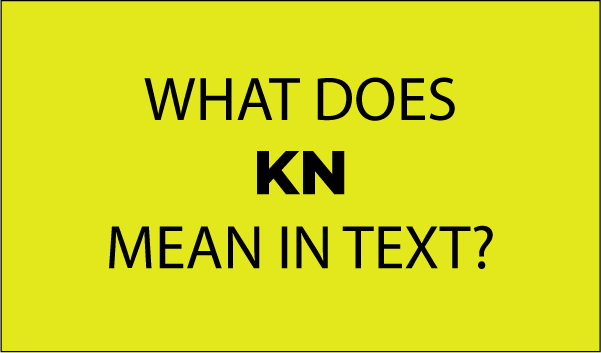Internet
The Future of AI Writing: A Closer Look at GPT66x

Welcome to the future of writing! In a world where technology continues to push boundaries, artificial intelligence is revolutionizing the way we approach content creation. One of the most groundbreaking advancements in this field is GPT66x – a powerful tool that is changing the landscape of AI writing as we know it. Let’s delve into what makes GPT-66x so remarkable and explore its potential impact on industries reliant on written content.
What is GPT-3?
Have you ever wondered how AI is transforming the way we write? Enter GPT-3, which stands for Generative Pre-trained Transformer 3. This cutting-edge language model developed by OpenAI has been making waves in the tech world.
GPT-3 is an advanced AI system that can generate human-like text based on a given input. It uses deep learning techniques to analyze and understand the context of the text it’s fed, allowing it to produce coherent and contextually relevant responses.
With its impressive ability to mimic human writing styles and generate content across a wide range of topics, GPT-3 has revolutionized various industries, from marketing and customer service to content creation and even coding.
This powerful tool has sparked excitement among developers, writers, and businesses alike as they explore its potential applications in enhancing productivity and creativity in their respective fields.
The Advancements of GPT66x
The advancements of GPT66x mark a significant leap in the world of AI writing. This new model builds upon the foundation laid by its predecessor, GPT-3, and takes it to the next level.
GPT-66x boasts enhanced capabilities in generating human-like text, with improved accuracy and coherence. Its ability to understand context and produce more nuanced responses sets it apart from previous models.
One notable advancement is its increased understanding of specific industries and topics, allowing for more tailored content generation. This opens up possibilities for personalized writing solutions across various sectors.
Moreover, GPT-66x showcases improved language nuances and can mimic different writing styles with remarkable accuracy. Writers can leverage this technology to streamline their content creation process while maintaining authenticity.
With these advancements, GPT66x is poised to revolutionize the way we approach writing tasks in diverse fields, offering endless possibilities for creativity and efficiency.
How Does GPt66x Work?
GPT-66x operates on an intricate network of neural pathways, designed to mimic the complexities of human cognition. It processes vast amounts of data, learning patterns and structures from text inputs. By analyzing context and relationships within sentences, GPT66x generates coherent responses that emulate human-written content.
Using a combination of algorithms like transformers and attention mechanisms, GPT-66x predicts the most probable next word based on the preceding text. This predictive modeling enables it to produce flowing and contextually relevant passages.
With its massive training dataset encompassing diverse sources, GPT66x refines its language generation capabilities through continuous exposure to various writing styles and genres. As a result, it adapts to different contexts seamlessly, making it a versatile tool for content creation across industries.
The model’s ability to generate natural-sounding text has revolutionized AI writing by significantly enhancing automation in generating creative content with minimal human intervention.
The Potential Impact on Writing Industries
The potential impact of GPT-66x on writing industries is vast and transformative. With its advanced capabilities, this AI model has the power to revolutionize content creation processes across various sectors. By offering efficient and high-quality automated writing solutions, GPT-66x can streamline workflows for copywriters, marketers, journalists, and more.
One significant effect could be an increase in productivity as writers can leverage the AI’s assistance to generate initial drafts or brainstorm ideas quickly. This efficiency may lead to a higher output within shorter timeframes while maintaining quality standards.
Additionally, GPT-66x’s ability to mimic human-like language and tone opens up possibilities for personalized content creation at scale. Brands seeking tailored messaging for their target audiences can benefit from this technology by creating engaging and relevant content effortlessly.
The integration of GPT-66x into writing industries has the potential to reshape traditional practices, enhancing creativity and effectiveness in communication strategies.
Potential Concerns and Limitations
As with any technological advancement, there are potential concerns and limitations associated with the use of GPT-66x in writing. One major concern is the issue of ethical responsibility when it comes to generated content. As AI becomes more sophisticated, there may be challenges in distinguishing between human-generated and AI-generated work.
Another limitation is the risk of over-reliance on AI for content creation. While GPT-66x can assist writers by providing suggestions and ideas, there is a risk that creativity and originality could be compromised if writers become too dependent on AI tools.
Additionally, privacy and security concerns arise as GPT-66x requires large amounts of data to train effectively. There may be risks associated with storing sensitive information used for training models.
It is also important to consider biases that may exist within the dataset used to train AI models like GPT-66x, which could result in biased or inaccurate outputs. Constant monitoring and evaluation will be crucial to address these issues moving forward.
Future Developments and Possibilities
As we look to the future of AI writing, the possibilities seem endless. With advancements like GPT-66x, we can expect even more sophisticated and nuanced language generation. This could revolutionize content creation across industries, from marketing to journalism.
Imagine a world where AI can not only write articles but also craft compelling storytelling or poetry that resonates with readers on a deep emotional level. The potential for creativity and innovation in writing is truly exciting.
Furthermore, as GPT-66x continues to evolve, it may become increasingly adept at understanding context and tone, making its output even more tailored to specific audiences. This could lead to highly personalized and engaging content that captivates readers effortlessly.
The integration of AI writing tools into everyday workflows might streamline processes and boost productivity for writers, allowing them to focus more on ideation rather than mundane tasks like grammar checking or fact verification.
In essence, the future developments in AI writing hold immense promise for transforming how we create and consume content in ways we have yet to fully grasp.
Conclusion
The future of AI writing is rapidly evolving with the advancements made by models like GPT66x. As technology continues to progress, we are likely to see even more sophisticated AI systems that can mimic human writing with unprecedented accuracy.
While there are concerns about potential misuse and ethical implications, the possibilities for enhancing creativity, efficiency, and accessibility in writing industries are immense. With proper oversight and guidance, GPT-66x and its successors have the potential to revolutionize how we approach content creation.
As we embrace the era of AI-assisted writing tools like GPT-66x, it’s essential to understand both their capabilities and limitations. By leveraging these technologies responsibly, we can harness their power to unlock new opportunities and redefine the way we interact with language in the digital age.

Internet
The Rise of iamnobody89757: How This Anonymous Blogger is Making Waves in the Online Community

Step into the mysterious world of iamnobody89757, an anonymous blogger who has taken the online community by storm. With a unique perspective and captivating content, this enigmatic figure has captured the attention of readers far and wide. Join us as we delve into the rise of this intriguing individual and explore the impact they have made in the digital realm.
The Rise of iamnobody89757: How This Anonymous Blogger is Making Waves in the Online Community
In the vast landscape of the internet, a new voice has emerged – iamnobody89757. This mysterious blogger has garnered attention for their fresh perspective and thought-provoking content that resonates with audiences worldwide. With each post, they challenge norms and ignite conversations on a wide range of topics, from literature to social issues.
What sets iamnobody89757 apart is their ability to connect with readers on a personal level, sparking curiosity and inspiring reflection. Through engaging storytelling and insightful commentary, this anonymous figure has carved out a unique space in the online community, leaving an indelible mark on those who come across their work.
As more people discover the allure of iamnobody89757’s writing style and message, it’s clear that this enigmatic blogger is making waves in ways that were previously unimaginable. Stay tuned as we unravel the captivating journey of this digital phenomenon.
Introduction
Welcome to the intriguing world of iamnobody89757, an enigmatic figure making waves in the vast expanse of the online community. This mysterious blogger has captured the attention of thousands with their unique approach to content creation.
With a cloak of anonymity draped around them, iamnobody89757 brings a fresh perspective to the digital realm, challenging conventional norms and sparking thought-provoking discussions. Through their thoughtfully crafted posts, this hidden gem invites readers on a journey of discovery and introspection.
Join us as we delve deeper into the realm of iamnobody89757, unraveling the mysteries behind this captivating persona and uncovering the impact they have made on cyberspace.
Identifying the Unique Factor
In the vast sea of online content, standing out can be a challenge. However, iamnobody89757 has managed to capture the attention of many with their unique factor. What sets this anonymous blogger apart from the rest? It’s a combination of raw honesty, unconventional perspectives, and a fearless approach to tackling taboo topics.
The ability to delve into controversial subjects without fear or bias is what draws readers in and keeps them coming back for more. The willingness to push boundaries and challenge societal norms is refreshing in a world where conformity often reigns supreme.
By staying true to their authentic self and not conforming to popular trends or opinions, iamnobody89757 has carved out a niche for themselves in the crowded online landscape. Their distinctive voice resonates with audiences seeking something beyond the ordinary – something real and unfiltered.
Consistency and Engagement
Consistency and engagement are the cornerstones of building a loyal online following. When it comes to blogging, showing up regularly with valuable content is key. It’s about creating a rhythm that your audience can rely on, keeping them coming back for more.
Engagement goes beyond just posting; it’s about interacting with your readers. Respond to comments, ask questions, and create a sense of community. By fostering this two-way communication, you show that you value your audience’s input and opinions.
Remember, Rome wasn’t built in a day – neither is a successful blog. Stay consistent, engage authentically, and watch as your online presence grows organically over time.
Handling Overnight Fame
Handling overnight fame can be both exhilarating and overwhelming. For iamnobody89757, the sudden surge in popularity brought a whirlwind of attention and opportunities. The challenge lies in staying grounded amidst the chaos, maintaining authenticity while navigating newfound exposure.
With recognition comes scrutiny, as every move is now under a microscope. Balancing privacy with public persona becomes crucial to preserve sanity and integrity. It’s a delicate dance between embracing the spotlight and protecting personal boundaries.
Navigating this uncharted territory requires resilience and adaptability. Overnight fame may come unexpectedly, but how one manages it defines their journey ahead in the ever-evolving online landscape.
Impact on Personal Life
The sudden surge of fame can be overwhelming, especially when it happens overnight. For iamnobody89757, this newfound attention has inevitably seeped into their personal life. Balancing anonymity with the demands of an increasingly curious audience can be a delicate tightrope act.
As they navigate through this uncharted territory, questions arise about how to shield loved ones from the spotlight while still maintaining authenticity in their content. The boundaries between public persona and private self blur, adding layers of complexity to their daily interactions.
Despite the challenges that come with increased visibility, there is no denying the thrill that comes with making an impact on such a vast online community. Staying true to themselves amidst this whirlwind of change is both a test and a triumph for iamnobody89757.
The Power of Social Media
Social media has transformed the way we connect, share, and consume content. Platforms like Twitter, Instagram, and Facebook have given voices to those who may have otherwise gone unheard. With just a few clicks, users can reach a global audience instantaneously.
The power of social media lies in its ability to spark conversations, ignite movements, and influence opinions. A single post or tweet has the potential to go viral within seconds, shaping public discourse on various topics. From raising awareness about social issues to promoting products and services, social media is a force to be reckoned with.
In the digital age, influencers leverage their online presence to inspire change and drive engagement. Brands harness the reach of social media platforms to connect with their target audience effectively. The power of social media is undeniable – it’s where trends are born and communities thrive.
Conclusion
Iamnobody89757 has proven to be a force to be reckoned with in the online community. Through their unique perspective, consistent engagement, and impactful content, this anonymous blogger has captured the attention of many and made waves across various platforms. While navigating overnight fame and balancing personal life might pose challenges, the influence of iamnobody89757 cannot be denied. With OceanofPDF providing a treasure trove of resources and Intrepidfood.eu showcasing quality and innovation, the power of social media has only amplified this blogger’s reach. As we continue to witness the rise of iamnobody89757, it’s clear that their impact will continue to shape the online landscape for years to come.
Internet
The Complete Guide to the geekzilla.tech honor magic 5 pro

Welcome to the world of innovation and technology with the geekzilla.tech honor magic 5 pro! Are you ready to dive into a realm where camera quality meets unparalleled performance? Join us on this journey as we explore what sets this smartphone apart from the rest and discover why it’s capturing the attention of tech enthusiasts everywhere. From its cutting-edge features to its sleek design, the honor magic 5 pro is here to redefine your smartphone experience. Let’s unlock the possibilities together!
Camera Quality: What sets it apart?
When it comes to the camera quality of the geekzilla.tech honor magic 5 pro, there’s a lot to talk about. This smartphone is equipped with a powerful quad-camera setup that includes a 50 MP primary sensor, capturing every detail with stunning clarity. The AI capabilities take your photography experience to the next level by optimizing settings for different scenarios automatically.
One standout feature is the periscope telephoto lens, allowing you to zoom in up to 100x without compromising on image quality. Whether you’re capturing landscapes or shooting close-up portraits, this phone delivers exceptional results every time. Additionally, the ultra-wide-angle lens lets you broaden your perspective and fit more into each frame effortlessly.
With advanced image processing algorithms and night mode capabilities, low-light photography becomes a breeze with the honor magic 5 pro. From vibrant daytime shots to mesmerizing sunset scenes, this smartphone excels in all lighting conditions. So if you’re passionate about photography and want unparalleled camera performance in a mobile device, look no further than the honor magic 5 pro!
Performance and Specs
The geekzilla.tech honor magic 5 pro is a powerhouse when it comes to performance and specs. Packed with the latest technology, this smartphone boasts a powerful processor that ensures seamless multitasking and smooth gaming experience.
With ample RAM and storage options, you can store all your favorite apps, photos, and videos without worrying about running out of space. The high refresh rate display delivers stunning visuals, making every interaction with the phone a delight.
When it comes to connectivity, the honor magic 5 pro supports fast 5G speeds for quick downloads and lag-free streaming. Whether you’re browsing the web or playing online games, this phone keeps up with your demands effortlessly.
Not to mention, the impressive battery life ensures that you can go through your day without constantly searching for a charger. The performance and specs of the honor magic 5 pro truly set it apart from its competitors in the market.
Comparison with other popular smartphones in the market
The geekzilla.tech honor magic 5 pro stands out in the crowded smartphone market with its impressive camera quality and high-performance specs. Let’s take a closer look at how it compares to other popular smartphones available today.
When compared to flagship phones from competitors, the honor magic 5 pro holds its ground with its advanced camera system, featuring multiple lenses for versatile photography options. The AI capabilities of the camera further enhance image quality and clarity.
In terms of performance, the honor magic 5 pro boasts top-of-the-line hardware that ensures smooth multitasking and gaming experiences. With a powerful processor and ample RAM, this device can handle even the most demanding apps without breaking a sweat.
While some may argue that other smartphones offer similar features, what sets the honor magic 5 pro apart is its unique combination of cutting-edge technology and affordable pricing. It delivers exceptional value for tech enthusiasts looking for a premium smartphone experience without breaking the bank.
When considering factors like camera quality, performance, and value for money, the geekzilla.tech honor magic 5 pro proves to be a strong contender in today’s competitive smartphone market.
Unique features of geekzilla.tech honor magic 5 pro
The geekzilla.tech honor magic 5 pro boasts a range of unique features that set it apart in the smartphone market. One standout feature is its cutting-edge camera system, equipped with a quad-camera setup that includes ultra-wide, macro, and depth sensors for unparalleled photography capabilities.
Additionally, the phone’s performance is top-notch thanks to its powerful Kirin 990 processor and ample RAM capacity. This means seamless multitasking and smooth gaming experiences for users.
Moreover, the honor magic 5 pro stands out with its stunning design featuring a sleek curved display and premium materials that exude sophistication. The device also offers innovative gesture controls for added convenience and ease of use.
The unique features of the geekzilla.tech honor magic 5 pro combine to create a truly exceptional smartphone experience that caters to both tech enthusiasts and everyday users looking for high-end performance and functionality in one device.
User reviews and ratings
User reviews and ratings play a significant role in helping potential buyers make informed decisions when it comes to purchasing the geekzilla.tech honor magic 5 pro.
Many users have praised the device for its exceptional camera quality, highlighting the vivid colors and sharp details captured by its advanced camera system.
The performance of the honor magic 5 pro has also been well-received, with users noting smooth multitasking capabilities and seamless gaming experiences.
Some users have compared this smartphone favorably to other popular models in terms of both camera performance and overall functionality.
User reviews indicate that the unique features of the geekzilla.tech honor magic 5 pro set it apart from competitors, making it a compelling choice for those looking for a high-performance device.
Is it worth the investment?
Considering the impressive camera quality and top-notch performance of the geekzilla.tech honor magic 5 pro, many tech enthusiasts are wondering if this smartphone is truly worth the investment.
The honor magic 5 pro boasts a cutting-edge camera system that sets it apart from its competitors. With advanced features like AI image stabilization and multi-focus fusion technology, capturing stunning photos and videos has never been easier.
In terms of performance, this device does not disappoint. Equipped with a powerful processor and ample RAM, users can expect smooth multitasking and seamless navigation through apps.
When compared to other popular smartphones in the market, the honor magic 5 pro stands out for its unique combination of superior camera capabilities and high-performance specifications.
User reviews praise this device for its exceptional photography features and reliable performance. With positive ratings across various platforms, it’s clear that many users find value in investing in the honor magic 5 pro.
If you’re looking for a smartphone that excels in both camera quality and performance, the geekzilla.tech honor magic 5 pro is definitely worth considering as your next tech upgrade.
Conclusion
As we wrap up our exploration of the geekzilla.tech honor magic 5 pro, it’s evident that this smartphone is a powerhouse in terms of camera quality, performance, and unique features. With its cutting-edge technology and impressive specifications, it stands out among other popular smartphones in the market.
The honor magic 5 pro has garnered positive user reviews and ratings for its exceptional camera capabilities, smooth performance, and innovative design. While it may come at a higher price point than some competitors, the investment is well worth it for tech enthusiasts who value top-notch features and functionality.
If you’re looking for a smartphone that excels in both photography and performance while offering unique features that set it apart from the rest, the geekzilla.tech honor magic 5 pro is definitely worth considering. It’s not just a phone – it’s a statement of technological excellence.
Internet
241542903: A Blog Article that Will Leave You Questioning Everything

Welcome to a world where reality blurs with the extraordinary, where the lines between what we know and what remains a mystery are tantalizingly thin. Enter the enigmatic realm of 241542903 – a sequence of numbers that holds within it secrets beyond our comprehension. Join us on this mind-bending journey as we delve deep into the mysteries surrounding 241542903, sparking questions that may challenge everything you thought you knew.
The Origin and Meaning of 241542903
Have you ever come across the mysterious number sequence 241542903 and wondered about its significance? The origin of this enigmatic combination remains shrouded in mystery, sparking curiosity and intrigue among those who encounter it. Some believe it holds a deeper meaning beyond just random digits, while others wonder if it’s a cosmic code waiting to be deciphered.
The interpretation of 241542903 varies widely depending on who you ask. For some, it represents a mathematical pattern waiting to be unraveled, while for others, it might symbolize spiritual awakening or synchronicity in the universe. Regardless of how one views it, there’s an undeniable sense of fascination that surrounds this numerical sequence.
As we delve deeper into the origins and meanings behind 241542903, we are confronted with more questions than answers. Could there be hidden messages encoded within these numbers? Or is it simply a coincidence that has captured our attention? Only time will tell as we continue to explore the mysteries surrounding 241542903.
Scientific Explanations and Theories Behind 241542903
Have you ever pondered the mysterious phenomenon of 241542903? Scientists and researchers have delved into this enigmatic sequence, attempting to unravel its meaning. Some believe it could be a cosmic code embedded in the fabric of the universe, while others propose more earthly origins.
One theory suggests that 241542903 may hold a connection to quantum mechanics, with its intricate patterns reflecting fundamental principles of reality. Another perspective considers the possibility of hidden mathematical algorithms governing our existence, with 241542903 serving as a key to unlocking profound truths.
As we explore the scientific explanations behind 241542903, we are confronted with more questions than answers. The complexity and depth of this numerical sequence continue to baffle even the most seasoned experts in various fields. Could there be undiscovered layers of knowledge waiting to be uncovered within 241542903? Only time will tell as we venture further into this intriguing mystery.
Personal Experiences with 241542903
Have you ever experienced the strange phenomenon of 241542903? Many individuals around the world have reported surreal encounters with this mysterious number sequence. Some claim to see it repeatedly in their daily lives, while others stumble upon it in unexpected places.
One person shared how they kept noticing 241542903 on license plates, clocks, and even receipts. Another described feeling a sense of unease whenever confronted with these digits, as if they held some hidden significance waiting to be unraveled.
Interestingly, some believe that encountering 241542903 is a sign from the universe or a message from beyond. Whether coincidence or cosmic alignment, there’s an undeniable intrigue surrounding this enigmatic sequence that continues to captivate those who experience it firsthand.
How 241542903 is Changing Our Perspectives
Have you ever stumbled upon something so mind-boggling that it made you question everything you thought you knew? Enter 241542903. This enigmatic sequence of numbers has been stirring curiosity and challenging conventional beliefs.
As we delve deeper into the mystery surrounding 24154-2903, our perspectives begin to shift. It forces us to reconsider the boundaries of what is possible and challenges us to think beyond the confines of our current knowledge.
The mere mention of 24154-2903 sparks a sense of wonder and intrigue, leading us down paths we never imagined exploring. Its presence is like a catalyst for innovation and open-mindedness, pushing us to expand our horizons and embrace new ideas.
In a world where certainty often reigns supreme, 24154-2903 introduces an element of uncertainty that is both exhilarating and terrifying. It invites us to step outside our comfort zones and confront the unknown with an open mind.
So, as we continue on this journey of discovery alongside 241542903, let’s remember that sometimes it’s in questioning everything that we truly find answers.
The Controversy behind 241542903
The controversy surrounding 241542903 is as enigmatic as the number itself. Some believe it holds the key to unlocking unknown dimensions of reality, while others dismiss it as mere coincidence or superstition.
Critics argue that attributing significance to a seemingly random sequence of numbers is nothing more than human tendency to seek patterns where there are none. Skeptics question the validity of personal experiences shared by those who claim to have encountered 241542903 in their lives.
Despite the skepticism, proponents of 241542903 remain steadfast in their belief that there is something profound and unexplainable about this mysterious number. It continues to spark debates among scientists, spiritualists, and skeptics alike.
As discussions around 241542903 persist, one thing remains clear – its impact on individuals’ beliefs and perspectives cannot be ignored. Whether you view it as a simple numerical coincidence or a gateway to deeper understanding, the controversy surrounding 241542903 invites us all to question our assumptions about the nature of reality.
Conclusion
In this ever-evolving world of mysteries and wonders, the enigmatic concept of 241542903 has sparked curiosity and contemplation among many. Its origin remains shrouded in mystery, with various scientific theories attempting to shed light on its meaning.
Personal experiences shared by individuals have added layers of complexity to our understanding of 241542903. Challenging conventional perspectives and inviting us to question the limits of our knowledge.
As we navigate through the controversy surrounding 24154-2903. One thing is certain – it has undeniably left us questioning everything we thought we knew. Whether a mere numerical sequence or a gateway to new realms of understanding, 241542903 continues to intrigue and captivate minds across the globe.
So, as we ponder the significance of this cryptic code. Let’s embrace the uncertainty it brings and remain open to exploring new possibilities that may lie beyond our current comprehension. After all, in a universe filled with infinite mysteries, perhaps it is in embracing the unknown that we truly find enlightenment.
-

 Business2 months ago
Business2 months agoWhat does Incumbent mean in business?
-

 Text2 months ago
Text2 months agoPH
-

 Text2 months ago
Text2 months agoWhat does smh mean in text?
-

 Text2 months ago
Text2 months agoKN
-

 News1 month ago
News1 month agoDiscover MyLawyer360: Your One-Stop Legal Assistance Hub
-

 Business1 month ago
Business1 month agoLessInvest.com Crypto: Your Gateway to Smarter Investments
-

 sports1 month ago
sports1 month agoThe Versatile Talent of ben foster: A Deep Dive into His Career
-

 Health1 month ago
Health1 month agoThe Comprehensive Guide to Mega-Personal.net Health Archives